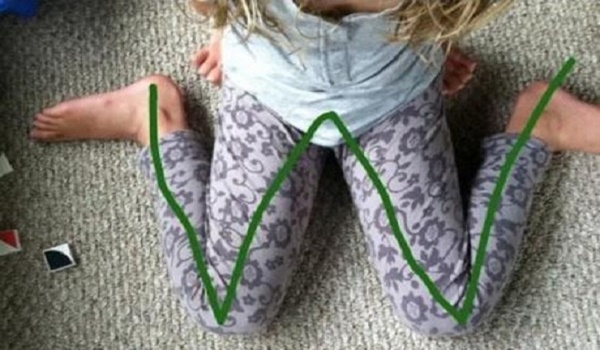“W-sitting” is a position that is too commonly used by children when seated on the ground. In this position, a child sits on their bottom, with knees bent, feet tucked under, and legs splayed out to each side in a “W” configuration. Because this position is so common, most adults do not realize that use of this position can have negative ramifications on children’s growth and development.
Negative Effects Of “W” Sitting:
The reality is that this position can cause orthopedic problems, delay development of postural control and stability, and delay development of refined motor skills. For these reasons, its use is strongly discouraged.
Excessive use of a “W-sit” during the growing years puts undue stress on the hip abductors, hamstrings, internal rotators and heel cords, leading to the possibility of orthopedic problems in the future. “W-sitting” can lead to hip dislocation, and for children with pre-existing orthopedic conditions, these conditions can worsen when major muscle groups are placed in shortened positions. The muscles begin to tighten, and this can lead to a permanent shortening of the muscle, which can affect coordination, balance, and development of motor skills.The “W-sit” widens a child’s base of support, resulting in less need for weight shifting, postural control and stability as they are playing, moving and reaching than in other seated positions. In addition to resulting in decreased trunk control, the “W-sit” does not require as much trunk rotation, which helps develop midline crossing and separation of the two sides of the body needed for bilateral coordination. Good trunk control and stability, midline crossing and bilateral coordination are needed to develop refined motor skills and hand dominance. Children require the opportunities to develop more mature movement patterns in order to develop higher level skills.
How to prevent W-sitting:
It is best to prevent children from developing this habit. However, we all know children who have already established this as a preferred seated position. When possible, anticipate and catch it before you see your child move into a “W-sit”. If and when you do see your child in a “W”, consistently encourage her to adjust to a different position by saying, “Fix your legs.”Consistency is key. Make sure children know what some of their other options are so they can choose an alternative. Functional seated positions that will allow the child to develop trunk control and mature movement patterns include “tailor sit” (also called “criss-cross”), “long sit” and “side sit”. It is important for parents to teach and encourage alternate seated positions at home, and teachers to teach and encourage their students to use alternate seated positions at school. This encouragement will have positive effects on a child’s growth and development of foundational skills.When playing with a child on the floor, hold his knees and feet together when kneeling or crawling – it is impossible to get into a “W-sit” from there. The child will either sit to one side, or sit back on his feet, and from there he can be helped to sit over to one side. Try to encourage sitting over both the right and left sides to promote bilateral development. Using various patterns of movements and positions demand trunk rotation and lateral weight shifting.If a child is unable to sit alone in any position other than a “W”, talk with an occupational therapistabout supportive seating or alternative positions such as prone and side-lying. Sitting against the couch while playing may be one alternative, as well as using a small table and chair. A therapist will have many other ideas based on each individual child.



